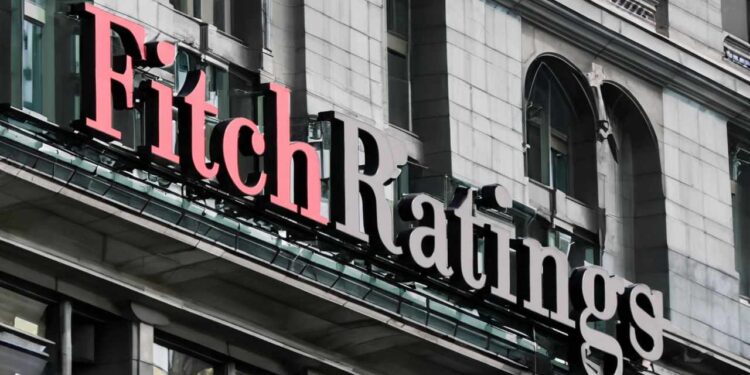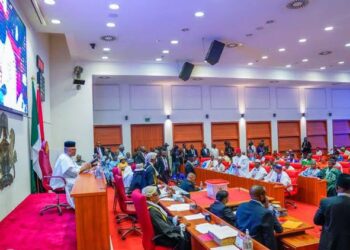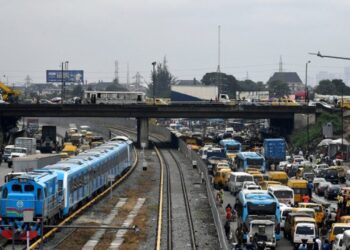Nigeria is leading the charge in banking sector recapitalisation across sub-Saharan Africa (SSA), according to Fitch Ratings.
In its ‘Sub-Saharan African Banks’ New Paid-In Capital Rules’ report, Fitch highlighted Nigeria’s aggressive capital reforms as the most consequential on the continent.
While several SSA regulators have raised minimum capital requirements in response to post-pandemic economic volatility, Nigeria’s approach stands apart in scale, speed, and structural impact.
The Central Bank of Nigeria (CBN) recently introduced a tenfold increase in minimum paid-in capital for banks with international licences, raising the threshold to N500 billion (USD348 million). National licence holders face an eightfold increase to N200 billion (USD139 million).
These figures are the highest among SSA markets, where most regulators have opted for more moderate increases and longer implementation timelines.
“Nigeria’s new requirements stand out from those of other markets in terms of business model differentiation and scale,” Fitch Ratings stated.
Unlike Kenya, Burundi, and Sierra Leone—where retained earnings are permitted and full compliance is expected by 2029—Nigeria prohibits the use of retained earnings entirely. Banks must raise fresh equity, merge, or downgrade their licence to comply by Q1 2026.
Regional comparison: Nigeria vs. SSA peers
Fitch’s report outlines a patchwork of regulatory approaches across SSA:
- Kenya: Capital requirements increased by up to 10x, but many large banks were already compliant. Retained earnings are allowed, and full implementation is scheduled for 2029.
- Burundi & Sierra Leone: Moderate increases (up to 5x), phased over several years. Banks can build capital internally through profits.
- WAEMU Countries: Requirements increased by up to 3x, with full compliance expected by end-2026.
- Angola & Uganda: Shorter timelines—Angola gave banks just 12 months, while Uganda set a deadline for mid-2024.
In contrast, Nigeria’s reforms apply uniformly and urgently across all banks, regardless of size or profitability. Fitch notes that “all Nigerian banks have to raise capital,” a condition not mirrored in other SSA markets, where many institutions were already compliant.
Investor confidence and compliance progress
Despite the steep requirements, Nigerian banks are making rapid progress.
“Almost all Fitch-rated banks have raised capital or formally launched the process,” the agency reported. Strong investor appetite has enabled most first- and second-tier banks to meet the new thresholds without triggering widespread consolidation.
Some smaller banks may still face pressure to merge or downgrade their licences. However, Fitch says it expects limited sector consolidation, with larger banks potentially acquiring smaller institutions to deploy excess capital.
Economic growth and credit expansion
The recapitalisation drive is expected to fuel credit growth across SSA, where banking sector loans average below 20% of GDP. Fitch forecasts real GDP growth in SSA to accelerate from 3.5% (2019–2024 average) to 4.2% in 2025 and 4.3% in 2026.
In Nigeria, the fresh capital needed to meet the new requirements amounts to 1.1% of GDP. The CBN has explicitly linked the reforms to broader economic development goals, aiming to reduce credit concentration risks and support larger-scale lending.
“Higher absolute capital requirements will provide banks with fuel for credit growth and enable them to finance larger projects within the confines of their single-obligor limits,” Fitch stated.
Addressing sector vulnerabilities
The recapitalisation also strengthens banks’ ability to absorb losses from high-risk exposures. Nigerian banks have faced challenges in provisioning for underperforming oil and gas loans, while Kenyan banks are grappling with high impaired loan ratios due to unpaid government contractor bills.
Fitch concludes that Nigeria’s recapitalisation strategy is not only the most ambitious in SSA but also the most transformative, positioning the country’s banking sector for stronger resilience and growth in the years ahead.
What you should know
In August, Fitch Ratings had reported that while most Nigerian banks are expected to exit the regulatory forbearance regime by December 2025, a select few will continue operating under forbearance beyond the period.
- Though no specific bank was mentioned, the credit rating agency added that this will be subject to stringent penalties, including a prohibition on dividend payments.
- This development comes amid broader efforts by the Central Bank of Nigeria (CBN) to reinforce financial stability and ensure banks enter 2026 with stronger capital buffers and cleaner balance sheets.




















